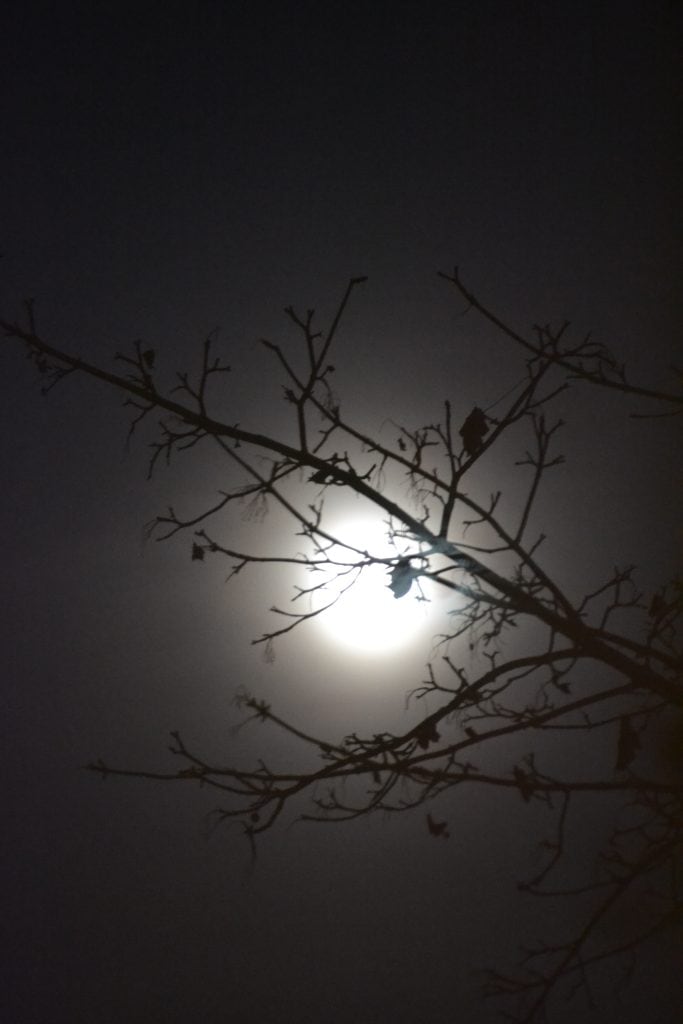Here’s what’s blooming in town this week to make your walks more enjoyable
By Laura Eisener
For a few weeks there has been activity in the center of town: lights being hung and the bows arranged on the spruce reminding residents of the festivities to come tonight! Today is the first day of meteorological winter. The wind and rain from the day before Thanksgiving brought down a lot of leaves, but even now there are some trees and shrubs holding on to colorful foliage. The full moon of November, usually called the beaver moon, shone down on a cold landscape Monday. We will not see another full moon until the day after Christmas.
After a few cold nights with breaks of warm weather in between, most of the flowers in our gardens have finished blooming. There are still a few things flowering where the sun’s heat was stored in passive solar collectors like bricks, stone, or pavement. These areas can be excessively hot in the summer but serve to protect them in late fall and early spring. South facing walls can also reflect sunlight, and the stone or concrete foundation of buildings on the south sides also store heat. At the small mall on Hamilton Street this week, several buds on the yellow ‘Happy Returns’ daylily (Hemerocallis ‘Happy Returns’) are still getting ready to open, and most of its leaves are still green. At Vitale Park, a tiny cudweed was blooming between some bricks next to some moss that was still bright green. Next to a telephone pole on Lincoln Avenue, a clump of seaside goldenrod was still sporting bright yellow flowers.
Cudweed (Gnaphalium spp.) is a small plant in the aster or composite family (Asteraceae) with small white flowers – very salt tolerant and common in Rumney Marsh. Most of the species were brought to North America by European settlers and have naturalized. The plants were often used to cure cattle of digestive problems. The blooming one I saw was growing between bricks in Vitale Park.
On Lincoln Avenue at Thanksgiving, a bright yellow flowering seaside goldenrod (Solidago sempervirens) still beamed next to a telephone pole, surrounded by asphalt, while most of the others I have seen lately in Rumney Marsh, and along tidal areas of Saugus River, have already gone to seed. The flowers of this goldenrod look like small sunflowers arranged on tall stems – the plants can grow up to eight feet in height, but this late bloomer was less than two feet tall. This coastal native perennial is one of the most attractive goldenrods, and its leaves remain green all winter.
While some birds have migrated south, many remain all winter. Among these, the northern cardinal (Cardinalis cardinalis) is one of the most colorful. The plumage on males becomes especially bright in late fall and winter. Females remain a somewhat olive color, though both males and females have bright red-orange beaks. Recently a small group of cardinals were foraging for food near the red bridge on the bike trail, one of the few structures in town that can compete with them for brightness.
Editor’s Note: Laura Eisener is a landscape design consultant who helps homeowners with landscape design, plant selection and placement of trees and shrubs, as well as perennials. She is a member of the Saugus Garden Club and offered to write a series of articles about “what’s blooming in town” shortly after the outbreak of the COVID-19 pandemic. She was inspired after seeing so many people taking up walking.
See more photo highlights at: www.Facebook.com/advocate.news.ma



